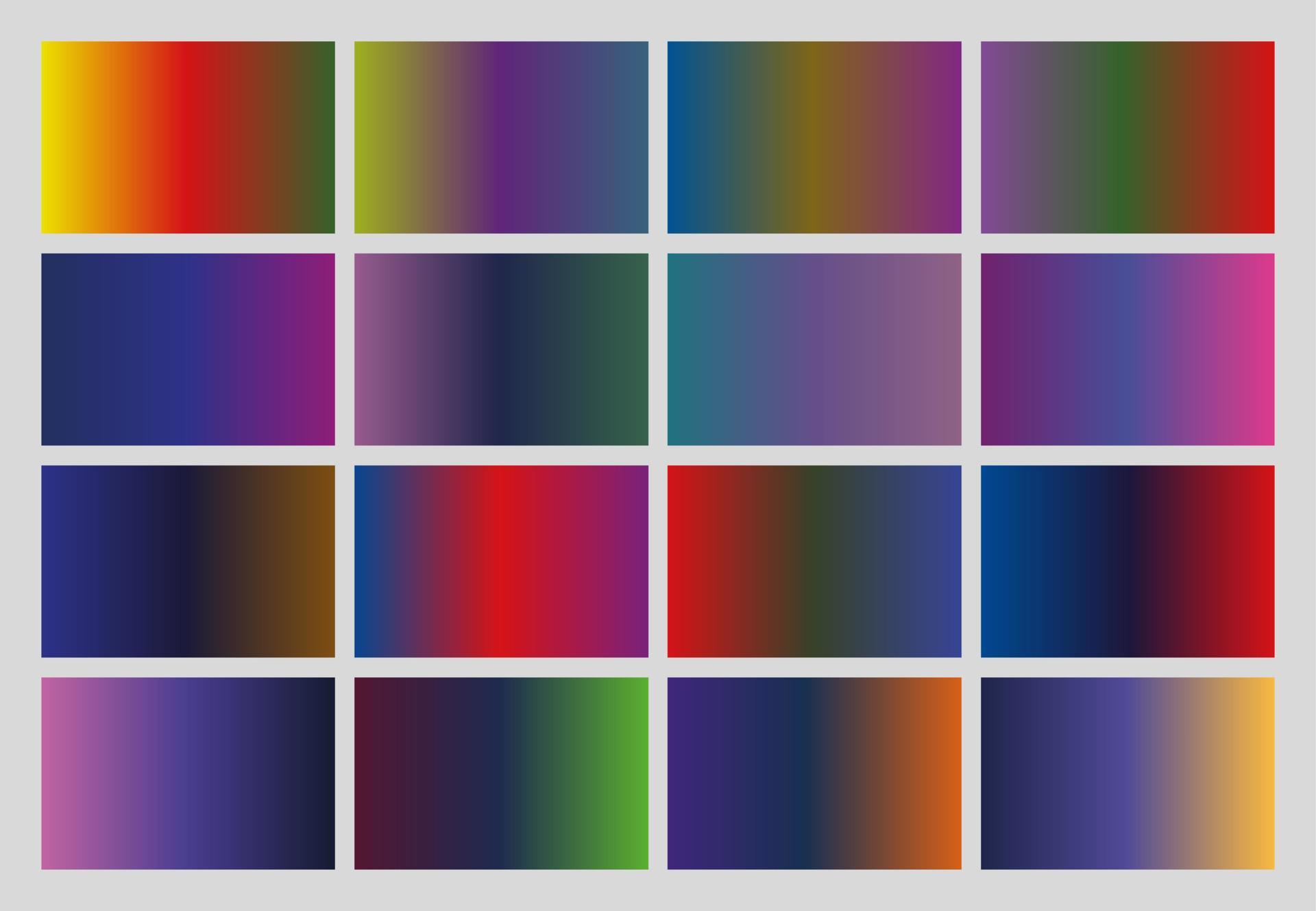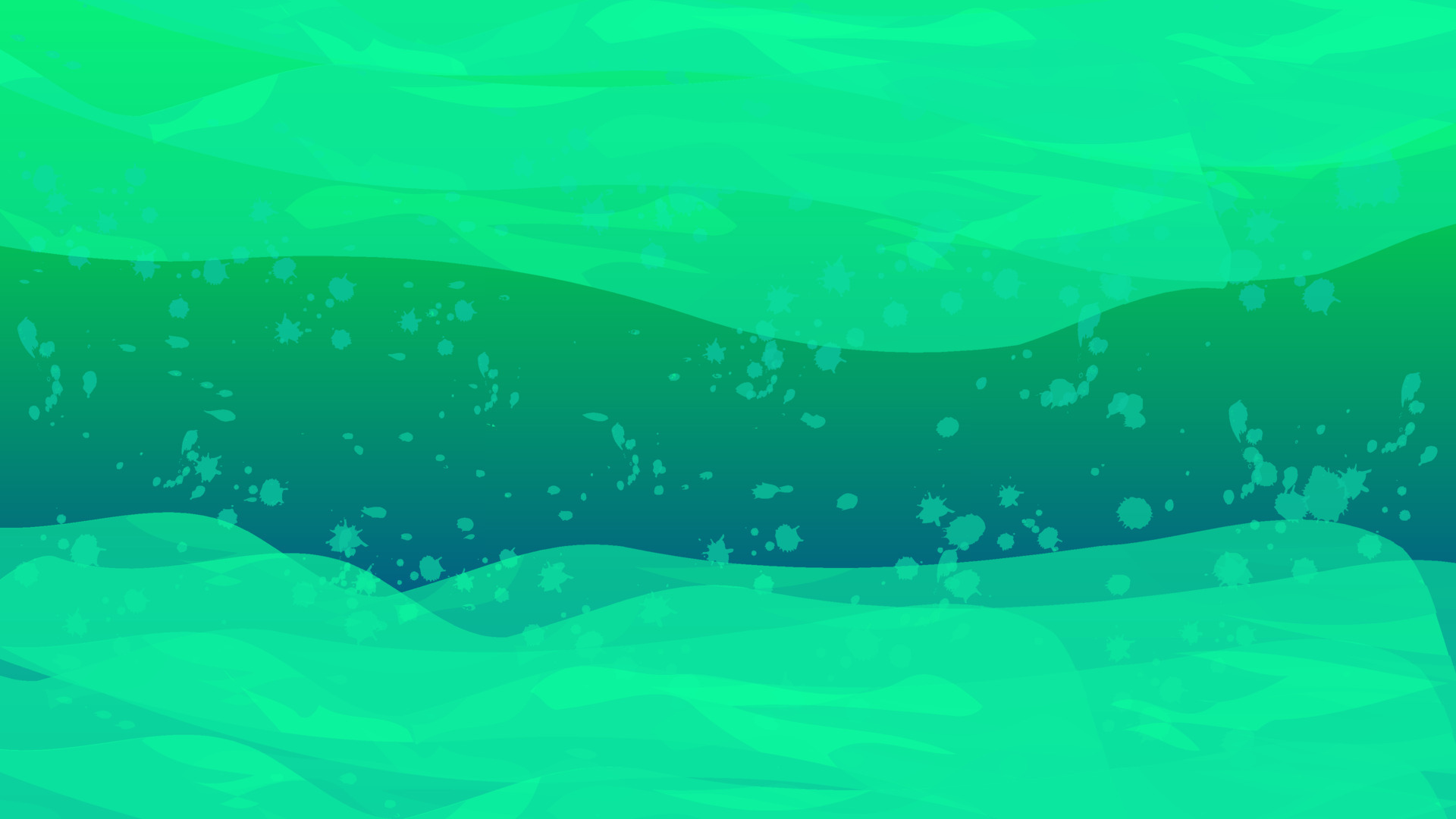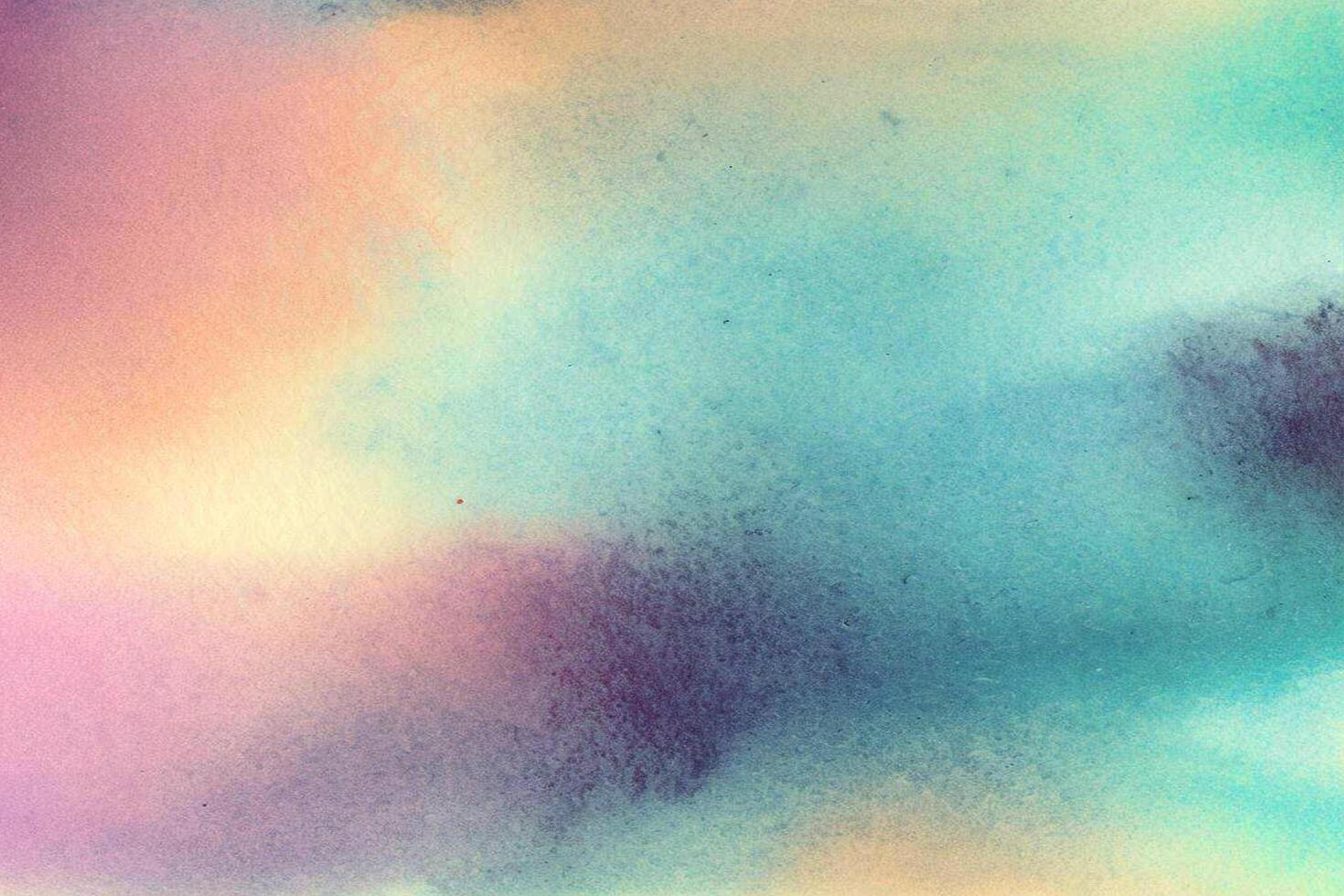Have you ever looked at a piece of art and felt an immediate connection to its texture, even if it was just a visual one? There's something truly captivating about designs that feel lived-in, a bit imperfect, and yet completely charming. This feeling, that slight sense of something being a little rough or having a gentle, uneven quality, is exactly what makes the scratchy water color gradient pattern so compelling in the world of visual design today. It’s a look that offers a unique blend of organic flow and a wonderfully raw, hand-touched feel, inviting you to explore its depths.
This particular style, you know, it brings a certain character to any project, whether it's for a website background, a print design, or even digital illustrations. It moves away from the perfectly smooth, sometimes sterile, digital finishes we often see, offering instead a visual experience that hints at something made with human hands. This kind of aesthetic, it really speaks to a desire for authenticity and a connection to more traditional art forms, even when created on a screen, which is pretty neat.
So, if you're keen on giving your creations a distinct voice, something that stands out from the crowd, exploring the scratchy water color gradient pattern might just be your next big creative adventure. It's a way to add depth, a bit of a story, and a truly memorable touch to whatever you're working on. We'll be looking at what makes this pattern so special, how you can bring it to life, and where it can make the biggest impact, too.
Table of Contents
- What is This "Scratchy" Look, Anyway?
- Why Embrace the Uneven Beauty?
- Bringing It to Life: Traditional Approaches
- Crafting Digital Scratchy Gradients
- Where Can These Patterns Shine?
- Frequently Asked Questions
- Adding Depth to Your Designs
What is This "Scratchy" Look, Anyway?
When we talk about something being "scratchy," it often brings to mind a feeling or a sound that's a little rough or perhaps slightly abrasive. It's that sensation of something having a bit of an uneven surface, like a piece of cloth that feels rough against the skin, or a sound that's a bit thin and harsh, maybe like an old record playing with some static. That's the essence of the word, you know, a texture or a sound that isn't perfectly smooth or clean. In visual art, especially with watercolor, this idea of "scratchy" translates into a texture that isn't perfectly blended or uniform, but instead shows subtle marks, lines, or areas where the pigment seems to have settled in a slightly rough way.
A water color gradient, generally speaking, is a smooth transition from one color to another, or from a color to transparency. It's about letting the water and pigment flow and mix on the paper to create a seamless blend. Now, when you add "scratchy" to that, it means introducing elements that disrupt that perfect smoothness. This could be visible brush strokes, little flecks where the paint didn't quite spread evenly, or even intentional marks that mimic the feeling of something being marked or made with scratches. It's about giving the gradient a kind of organic imperfection, a subtle grit, which is actually quite appealing.
So, a scratchy water color gradient pattern is a visual effect where colors gradually shift, but with an added layer of textured roughness. It's like seeing the delicate movement of water and pigment, yet also noticing the slight resistance or unevenness that gives it character. This can look like fine lines running through the blend, tiny speckles, or areas where the color appears to have been applied with a drier brush, leaving a distinct, almost feathery edge. It's a way to give your visuals a unique tactile quality, even if you can only experience it with your eyes, and it’s very effective.
Why Embrace the Uneven Beauty?
There are quite a few reasons why designers and artists are drawn to the scratchy water color gradient pattern. For one thing, it adds a tremendous amount of visual interest. A perfectly smooth gradient can sometimes feel a bit flat or generic, especially if you're looking for something that truly captures attention. The subtle imperfections and textured quality of a scratchy gradient, however, give it depth and a sense of movement, making it much more engaging to look at, which is a big plus.
Another compelling reason is the organic feel it brings. Watercolors, by their very nature, are fluid and unpredictable, and the scratchy effect amplifies this natural quality. It evokes a sense of something handmade, something that wasn't just generated by a machine. This human touch can create a warmer, more approachable vibe for your designs, helping them feel more authentic and less sterile. It’s a way, you know, to connect with people on a more personal level through your visuals.
This pattern also offers incredible versatility. It can be used to create a wide range of moods and aesthetics. A soft, light scratchy gradient might evoke a gentle, dreamy atmosphere, while a bolder, more pronounced one could suggest something raw, energetic, or even a bit distressed. This adaptability means it can fit into many different design contexts, from elegant branding to edgy artistic pieces, and it’s truly remarkable how much it can change the feeling of a piece.
Bringing It to Life: Traditional Approaches
Creating a scratchy water color gradient pattern with actual paints and paper is a wonderfully hands-on experience, and it often yields the most authentic results. It's a process that really lets you feel the materials and experiment with how they react. If you're looking to get your hands a little messy, this is definitely the way to go, and it’s very rewarding.
The Right Materials for a Tangible Feel
To start, you'll want some good quality watercolor paper. Paper with a bit of tooth or texture, often called cold-press paper, works really well because its surface helps create those lovely, slightly uneven marks. You'll also need a selection of watercolor paints; tubes or pans both work, but tubes might offer a bit more pigment intensity for gradients. Brushes are important, too. A round brush with a good point is versatile, but also consider a flat brush for broader strokes, and perhaps an older, stiffer brush that might naturally create more "scratchy" lines. A natural sponge or even a crumpled piece of paper can also be surprisingly useful for adding texture, you know, for a truly unique effect.
Beyond the basics, a spray bottle filled with water can help reactivate areas or create interesting watermarks. Salt, believe it or not, can be sprinkled onto wet paint to create unique crystallized textures as it dries. Even a stiff, dry brush, or a credit card edge, can be used to scrape into wet or damp paint, pulling up pigment and leaving those characteristic scratchy lines. It's all about experimenting with how different tools and techniques interact with the wet paint and paper, and it's quite fun to see what happens.
Step-by-Step: Creating Your Own Hand-Painted Gradient
First, prepare your paper by taping its edges down to a board to prevent warping, which is a common issue with watercolor. Next, decide on your color palette. Pick two or three colors that blend well together, or even complementary colors for a more striking transition. You might want to test these out on a scrap piece of paper first, just to see how they interact. This initial step is pretty important for getting the look you want, you know.
Begin by wetting the area of your paper where you want the gradient to appear. This is called the "wet-on-wet" technique, and it allows colors to flow and blend more smoothly. Apply your first color to one end of the wet area. While it's still wet, introduce your second color next to it, allowing them to gently bleed into each other. You can use your brush to guide the colors and encourage the blend. For that scratchy effect, consider using less water on your brush when applying some of the pigment, letting the brush hairs leave visible trails. Or, as the paint starts to dry a little, try dragging a semi-dry brush across the surface, which will lift some pigment and leave a textured mark. You can also lightly dab or press a textured item, like a sponge or even a piece of paper towel, into the drying paint to create subtle patterns. This is where the magic happens, so to speak.
Allow the paint to dry completely. As it dries, the textures will become more pronounced. You might notice little granulations or areas where the pigment settled unevenly, which is exactly what gives it that appealing scratchy quality. Remember, part of the charm of watercolor is its unpredictability, so embrace the happy accidents! Every piece will be unique, which is actually quite lovely.
Crafting Digital Scratchy Gradients
For those who prefer working in the digital space, creating a scratchy water color gradient pattern is absolutely possible and offers a lot of control. It lets you experiment endlessly without worrying about wasting paper or paint. This approach is really popular for digital artists and designers, and it’s surprisingly effective.
Essential Digital Tools
Software like Adobe Photoshop, Procreate, or Clip Studio Paint are excellent choices for this kind of work. They offer robust brush engines that can simulate natural media effects. The key to digital scratchy gradients lies heavily in the brushes you use. Look for brushes that are designed to mimic watercolor effects, especially those with textured edges, granulation, or a "dry brush" quality. Many artists create and share custom brush sets specifically for this purpose. You might also want to explore brushes that have a slightly abrasive feel, or those that create a subtle grating noise when applied, virtually speaking, you know, to get that true "scratchy" feel.
Beyond brushes, layers are your best friend in digital art. They allow you to build up your gradient, add texture on top, and experiment with blending modes without permanently altering your base colors. Masking tools are also incredibly useful for confining your textures to specific areas or for refining edges. It's all about building up the effect, layer by layer, which is pretty much how you get complex results.
Techniques for a Digital Touch
Start by creating a basic smooth gradient using your chosen colors on a new layer. This will be your foundation. On a new layer above this, select a textured watercolor brush. Instead of painting a smooth stroke, try short, overlapping strokes, or even quick dabbing motions, to build up a rough, uneven texture. Varying the pressure (if your tablet supports it) will also help create more organic variations in opacity and density. You can also use brushes that have a "scratchy" quality, like those that create thin and harsh lines, to add specific marks.
Experiment with blending modes for your texture layers. Overlay, Soft Light, or Multiply can often yield interesting results, allowing the texture to interact with the underlying gradient in unique ways. You can also add a noise filter or a subtle grunge texture layer on top of your gradient and set its blending mode to something like "Overlay" or "Soft Light" to give it that overall distressed feel. For those who enjoy programming or creating interactive experiences, platforms like Scratch, the free programming language, allow for the creation of visual effects and animations. While not directly for painting, understanding how digital elements interact can inform your approach to building up layers of texture and color, you know, in any digital art software. It's about seeing how different elements come together.
Another technique is to use a textured overlay. You can find or create images of paper textures, grunge patterns, or even actual scans of real watercolor washes with interesting granulation. Place this texture image on a layer above your gradient and adjust its blending mode and opacity until you achieve the desired scratchy effect. This can instantly add a lot of character and depth, and it’s a very efficient way to work.
Where Can These Patterns Shine?
The scratchy water color gradient pattern is incredibly versatile and can elevate a wide range of creative projects. For branding, it can give a company a unique, artistic identity that feels authentic and human. Imagine a logo or a website background that uses this texture; it immediately sets a distinct tone, suggesting creativity and a personal touch. It moves beyond generic corporate looks, which is rather appealing.
In web design, these patterns make fantastic backgrounds, banners, or section dividers. They add visual interest without being too distracting, and their organic nature can make a website feel more inviting and less rigid. They're also great for creating a sense of depth and atmosphere, especially if you're aiming for a softer, more artistic aesthetic. They really do make a difference to the overall feel.
For print materials, like invitations, greeting cards, book covers, or posters, a scratchy watercolor gradient can add a luxurious, tactile quality, even if it's just a visual one. It makes the piece feel more special, like a handcrafted item. It's a way to infuse personality into printed matter, and it can really make something stand out on a shelf. You could also use them in digital illustrations, adding a natural feel to character designs or backgrounds, making them seem less "perfect" and more alive. Learn more about design trends on our site, and you can also find inspiration for your next project by visiting our gallery of creative works.
Think about social media graphics, too. A scratchy watercolor gradient can serve as a beautiful, eye-catching background for quotes, announcements, or product showcases. It helps your content pop in a feed full of polished, often similar-looking visuals. It's a subtle way to differentiate your brand and capture attention, which is pretty important in today's crowded online spaces.
Frequently Asked Questions
How do you make a watercolor gradient look scratchy?
You can make a watercolor gradient look scratchy by using less water on your brush, allowing the brush hairs to leave visible marks as you apply paint. Also, try dragging a semi-dry brush across the surface as the paint begins to dry, or gently dabbing with a textured material like a sponge. These actions create those uneven, textured marks that give it a scratchy appearance, and it’s a very natural process.
What tools create a distressed watercolor effect?
For a distressed watercolor effect, you might use a stiff, dry brush, a credit card edge, or even your fingernail to scrape into wet or damp paint. Sprinkling salt onto wet areas can also create unique granulated textures as it dries. Digitally, specific textured watercolor brushes, noise filters, or grunge overlay layers are really good for achieving a distressed look, too.
Can you create scratchy watercolor gradients digitally?
Absolutely, you can create scratchy watercolor gradients digitally. Software like Photoshop or Procreate, combined with specialized watercolor or textured brushes, are perfect for this. You can layer smooth gradients with textured brush strokes, apply noise filters, or use textured overlay images with different blending modes to achieve that appealing scratchy effect. It offers a lot of control and allows for endless experimentation, which is quite handy.
Adding Depth to Your Designs
Embracing the scratchy water color gradient pattern is a fantastic way to add a layer of depth, character, and a touch of human warmth to your creative projects. It moves away from the perfectly polished and often impersonal digital aesthetic, offering something that feels more authentic and handcrafted. Whether you choose to work with traditional paints or digital tools, the process of creating these textures is both rewarding and endlessly inspiring. So, why not give it a try and see how this wonderfully imperfect pattern can transform your next design? It’s a chance to truly make something your own, and that's a great feeling.



Detail Author:
- Name : Payton Osinski
- Username : qweissnat
- Email : hilario.rohan@gmail.com
- Birthdate : 1998-12-17
- Address : 657 Eichmann Club Suite 411 Lisettehaven, TX 92099-7332
- Phone : 757-655-4719
- Company : Daniel Ltd
- Job : Conservation Scientist
- Bio : Quaerat magni quibusdam quis dolorem. Maxime eius quia eaque minus numquam consectetur. Et ducimus consequatur expedita ab quod et non aut. Voluptas delectus qui tenetur qui.
Socials
tiktok:
- url : https://tiktok.com/@qhyatt
- username : qhyatt
- bio : Quo eaque eos veniam fugiat occaecati excepturi.
- followers : 5860
- following : 2315
twitter:
- url : https://twitter.com/hyatt2020
- username : hyatt2020
- bio : Ut deserunt quis commodi est consequatur. Eos quia reprehenderit velit quo. Incidunt illum sunt ipsa non.
- followers : 688
- following : 2586



























